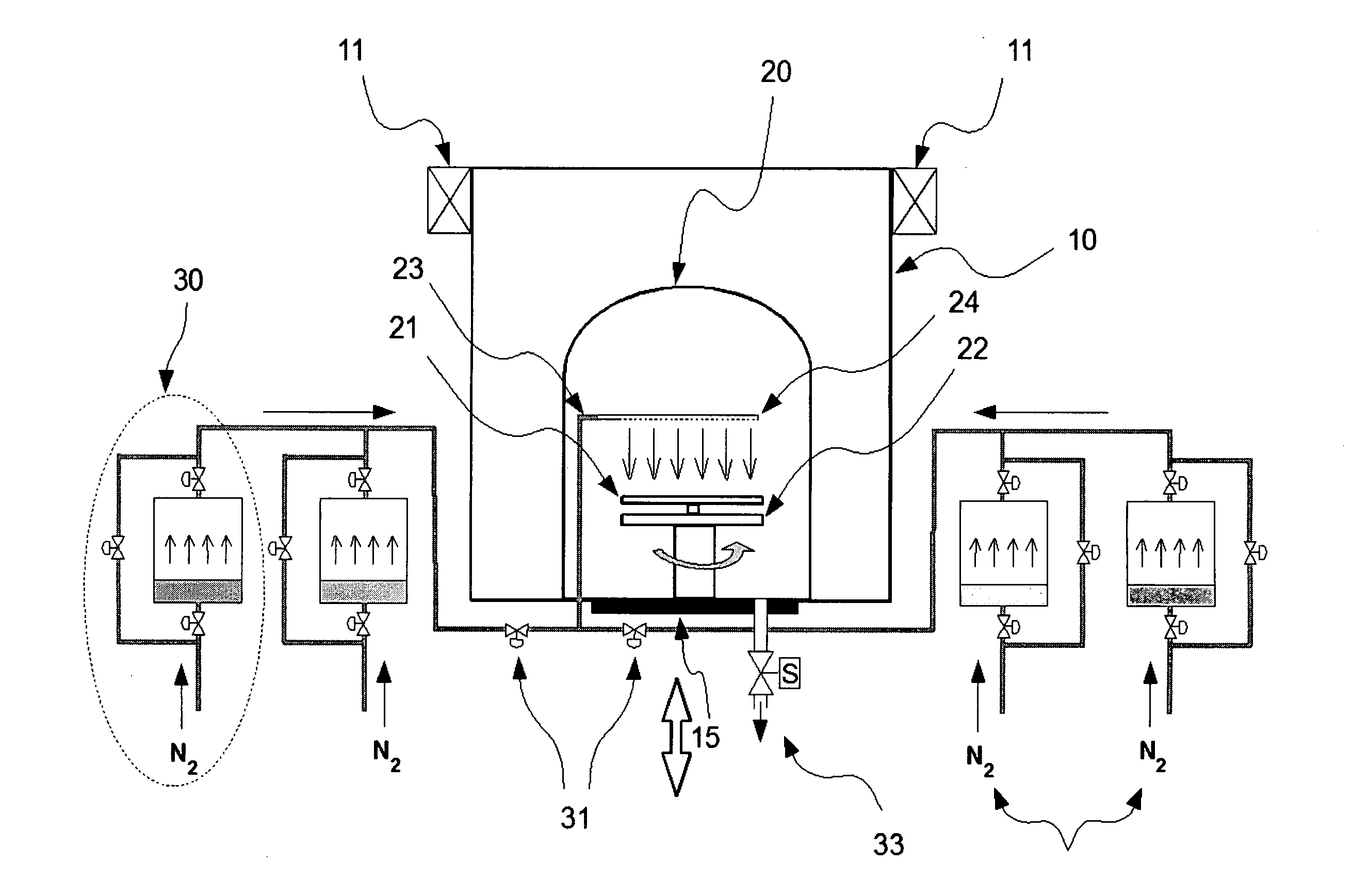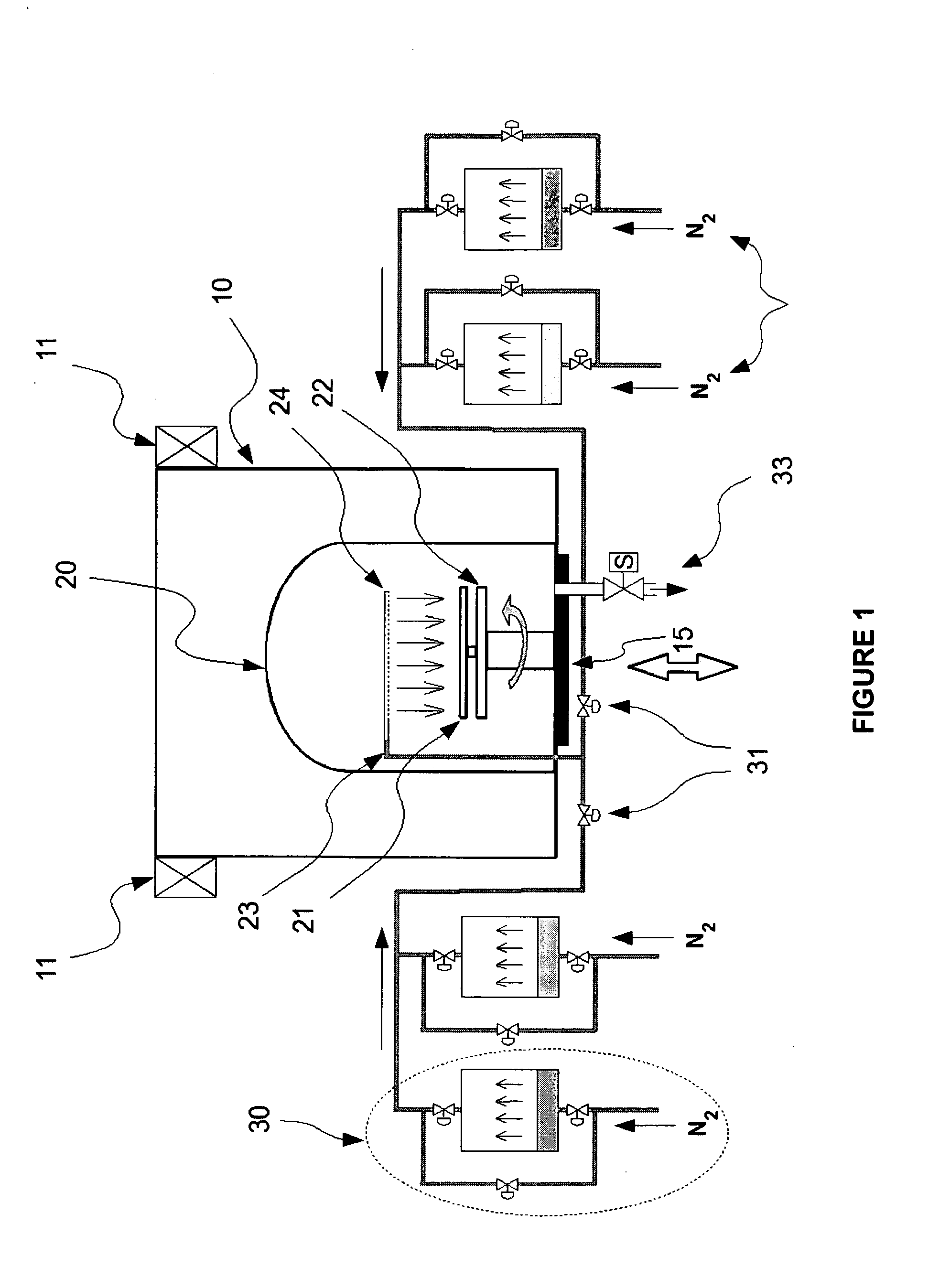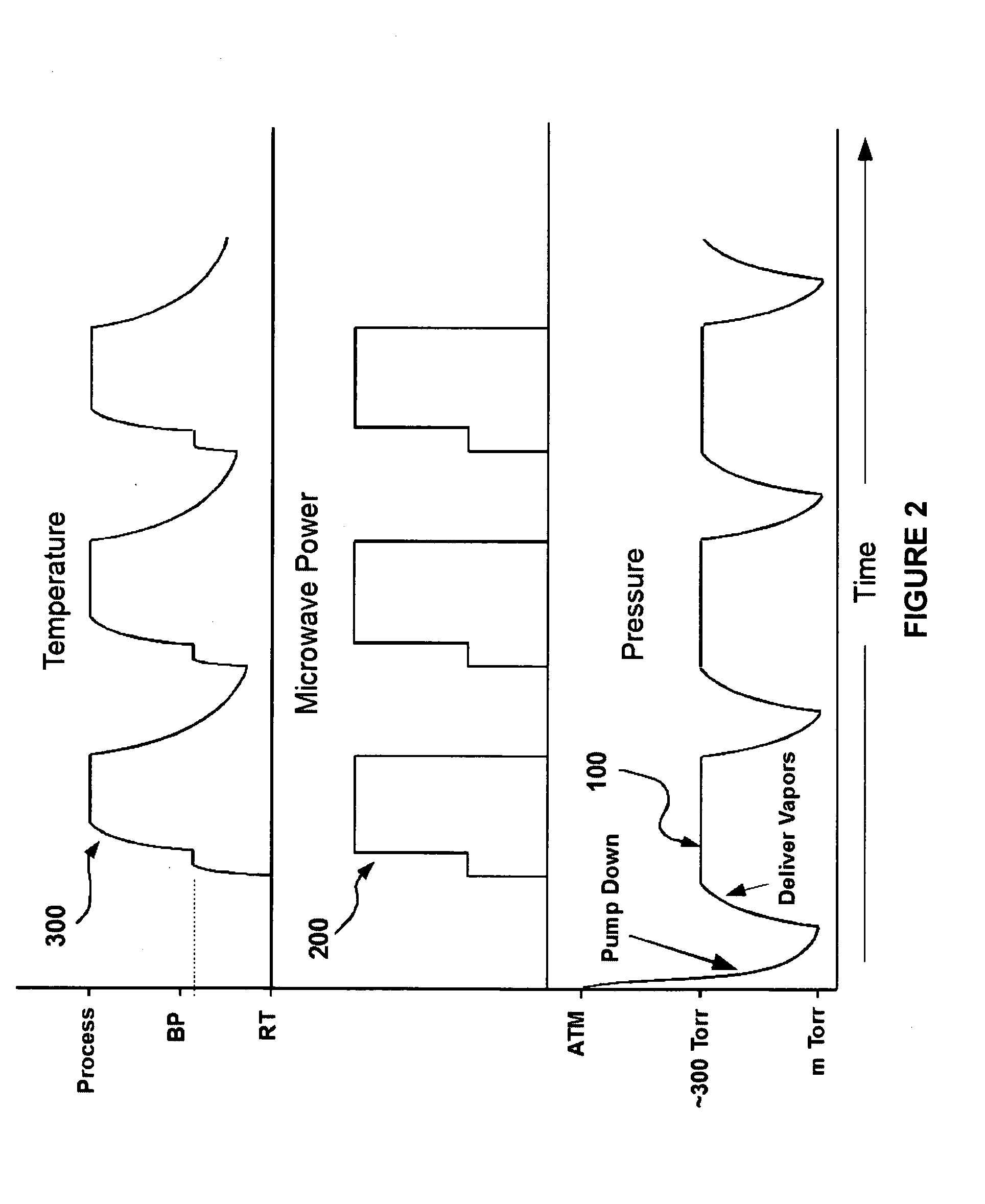Method and apparatus for microwave treatment of dielectric films
a dielectric film and microwave treatment technology, applied in the direction of microwave heating, electric apparatus, basic electric elements, etc., can solve the problems of poor adhesion with adjacent layers, reduced cohesive strength of porous dielectrics, and numerous challenges of porous dielectrics, so as to enhance the reaction in the film material, reduce the thermal budget, and enhance the coupling with microwaves
- Summary
- Abstract
- Description
- Claims
- Application Information
AI Technical Summary
Benefits of technology
Problems solved by technology
Method used
Image
Examples
example
[0081]A porous dielectric film containing PMMA stuffed into the pores was placed in a vacuum capable microwave chamber and first pumped down to 5×10−5 Torr at which point 500 sccm flow of N2 was allowed, which brought the pressure up to 6×10−2 Torr. Then microwave power was delivered into the chamber and the temperature was increased to soak temperatures of 330, 370 and 410° C. The purpose of this brief higher temperature step was to partially create the pores by partial burnout of PMMA.[0082]The time (m=minutes) at temperature is half of what is shown in the data on FIGS. 4 and 5. The N and EW in FIGS. 4 and 5 stand for “No” conditioning and using “ethanol+water” mixture (E:W=60:40 by weight) as the solvent. The largest peak in FIG. 5 is for the dielectric film sample with PMMA still stuffed in it, while ALKB refers to the Pristine OSG film.[0083]After the first exposure to microwave and half the soak time at high temperature, the sample was cooled to room temperature and immersed ...
PUM
| Property | Measurement | Unit |
|---|---|---|
| temperature | aaaaa | aaaaa |
| temperature | aaaaa | aaaaa |
| porosity | aaaaa | aaaaa |
Abstract
Description
Claims
Application Information
 Login to View More
Login to View More - R&D
- Intellectual Property
- Life Sciences
- Materials
- Tech Scout
- Unparalleled Data Quality
- Higher Quality Content
- 60% Fewer Hallucinations
Browse by: Latest US Patents, China's latest patents, Technical Efficacy Thesaurus, Application Domain, Technology Topic, Popular Technical Reports.
© 2025 PatSnap. All rights reserved.Legal|Privacy policy|Modern Slavery Act Transparency Statement|Sitemap|About US| Contact US: help@patsnap.com



